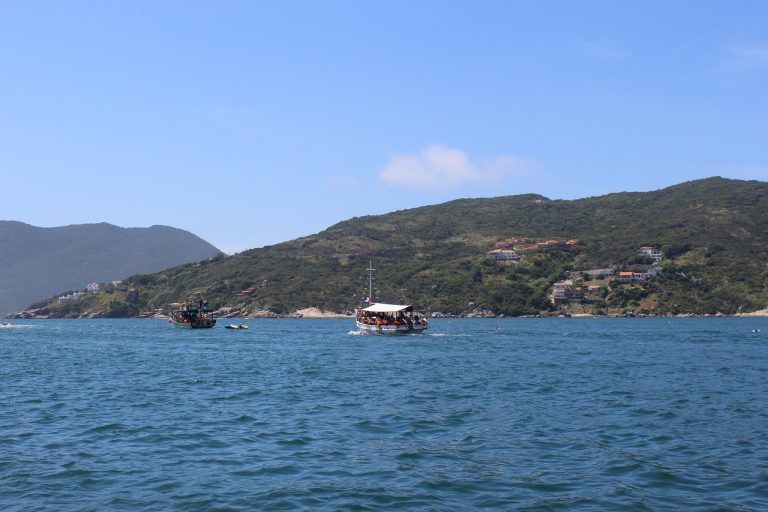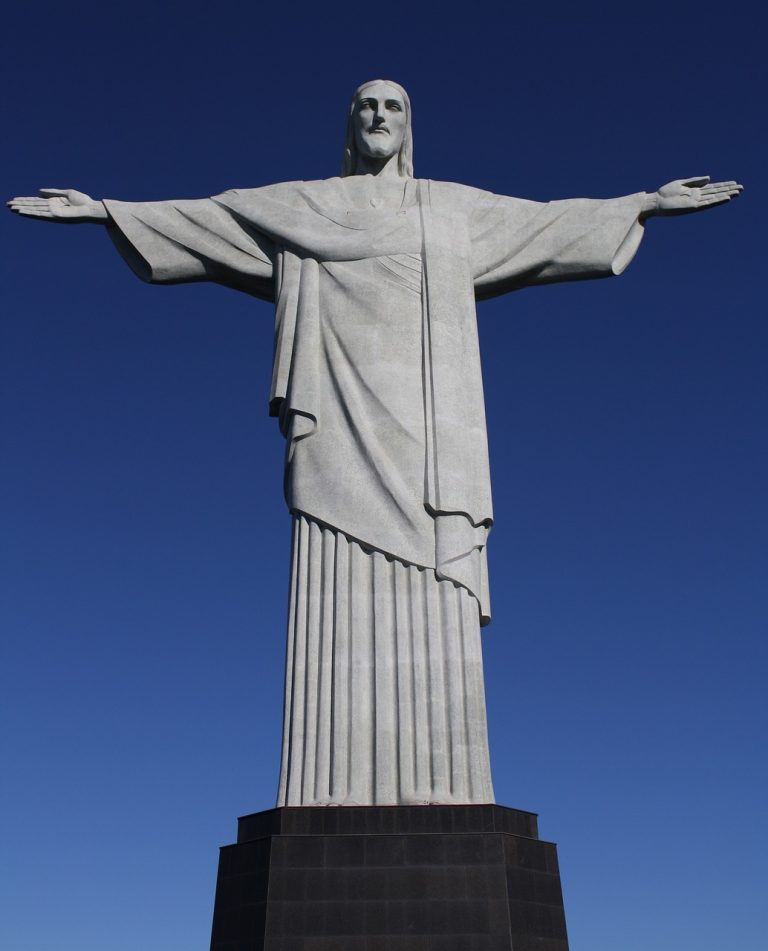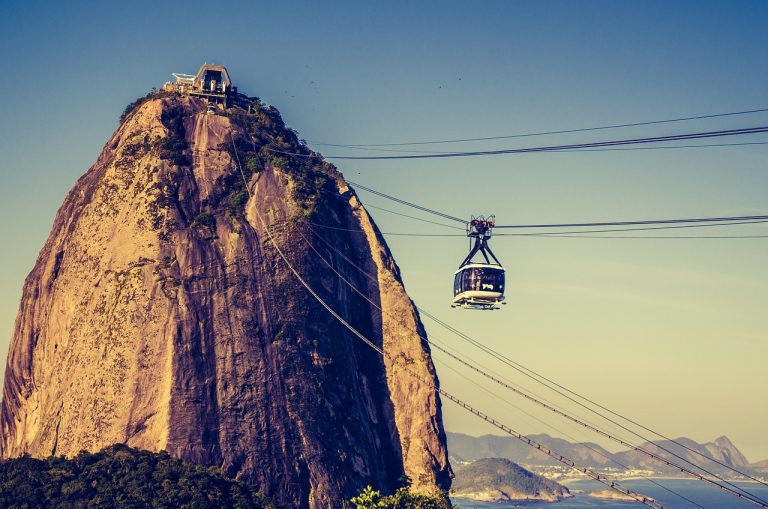Rio de Janeiro Brazil Video
Rio de Janeiro Brazil: A Cultural and Social Marvel
Rio de Janeiro, often referred to as simply Rio, is a vibrant and bustling city located in Brazil. It is renowned for its breathtaking landscapes, rich cultural heritage, and vibrant social scene. This article will explore the social and cultural impact of Rio de Janeiro, shedding light on its unique attributes and the ways in which it has influenced the world.
The Marvelous Carnival Celebration
- Samba Schools: Rio de Janeiro’s Carnival is world-famous for its elaborate samba parades. The city is home to numerous samba schools, which are community-based organizations that prepare for the annual Carnival competition. These schools showcase their vibrant costumes, infectious music, and mesmerizing dance moves, attracting millions of locals and tourists alike.
- Cultural Diversity: Carnival in Rio reflects the city’s diverse cultural heritage. It brings together people from different ethnic backgrounds, promoting inclusivity and unity. The event celebrates Afro-Brazilian traditions, indigenous influences, and European customs, creating a melting pot of cultures.
- Economic Boost: The Carnival celebration significantly impacts Rio de Janeiro’s economy. It generates revenue from tourism, creating job opportunities and boosting local businesses. The event attracts visitors from around the world, contributing to the city’s overall growth.
Keywords: Rio de Janeiro Carnival, Samba schools, Cultural diversity, Economic impact
Rio de Janeiro Brazil Image 1:

The Iconic Christ the Redeemer Statue
- Symbol of Faith: The Christ the Redeemer statue is an iconic landmark that overlooks Rio de Janeiro from the Corcovado mountain. It holds significant religious and cultural importance, representing the city’s strong Catholic heritage.
- Tourist Attraction: The statue attracts millions of visitors annually, both for its religious significance and its breathtaking panoramic views of the city. It has become a symbol of Rio de Janeiro and Brazil as a whole, leaving a lasting impression on those who visit.
- Architectural Marvel: The statue itself is a marvel of engineering and artistry. Standing at 98 feet tall, it was constructed using reinforced concrete and soapstone. Its outstretched arms welcome people from all walks of life, embodying a message of peace and unity.
Keywords: Christ the Redeemer, Iconic landmark, Tourist attraction, Architectural marvel
The Favelas: A Complex Reality
- Socioeconomic Challenges: Rio de Janeiro is known for its favelas, which are informal settlements characterized by poverty and limited access to basic services. These communities face socioeconomic challenges, including inadequate housing, crime, and limited educational opportunities.
- Resilient Communities: Despite the challenges, favelas are home to resilient communities that have developed unique cultural expressions. They are known for their vibrant music, dance styles like funk and baile funk, and street art. Favelas have contributed to the city’s cultural fabric.
- Urban Development: Efforts have been made to improve the living conditions in favelas through urban development projects. Initiatives such as cable cars, improved infrastructure, and social programs aim to uplift these communities and provide better opportunities for residents.
Keywords: Favelas, Socioeconomic challenges, Resilient communities, Urban development
Rio de Janeiro Brazil Image 2:

The World-Famous Copacabana Beach
- Iconic Beachscape: Copacabana Beach is one of the most famous beaches globally, known for its golden sands, turquoise waters, and vibrant atmosphere. It stretches for 2.5 miles along the Atlantic coast, attracting locals and tourists year-round.
- Leisure and Recreation: The beach offers a wide array of recreational activities, including beach volleyball, swimming, and sunbathing. It is also a hub for water sports such as surfing and paddleboarding, providing entertainment for visitors of all ages.
- Cultural Events: Copacabana Beach hosts various cultural events, from music concerts to New Year’s Eve celebrations. The annual New Year’s Eve party, known as Reveillon, attracts millions of people who gather to watch the stunning fireworks display and celebrate the arrival of the new year.
Keywords: Copacabana Beach, Iconic landmark, Leisure and recreation, Cultural events
The Vibrant Street Art Scene
- Colorful Expression: Rio de Janeiro’s streets are adorned with vibrant and expressive street art. Artists use walls and buildings as their canvas, showcasing their creativity and making bold statements about social and political issues.
- Artistic Freedom: Street art in Rio reflects the city’s commitment to artistic freedom and self-expression. It has become an integral part of the local culture, attracting artists from around the world to contribute to the ever-evolving urban art scene.
- Tourist Attraction: The street art scene has become a tourist attraction in its own right. Guided tours take visitors through neighborhoods like Santa Teresa and Lapa, where they can admire the vibrant murals and learn about the stories behind them.
Keywords: Street art, Colorful expression, Artistic freedom, Tourist attraction
Rio de Janeiro Brazil Image 3:

The Soccer Passion: Maracanã Stadium
- Soccer Mecca: Maracanã Stadium is one of the most iconic soccer stadiums in the world. It has witnessed historic matches and hosted major sporting events, including the FIFA World Cup and the Olympic Games.
- Passionate Fans: Soccer, or futebol, is deeply ingrained in Brazilian culture, and Maracanã Stadium is the heart of this passion. The stadium’s electric atmosphere during matches showcases the unwavering support and love Brazilians have for the sport.
- Legacy and Heritage: Maracanã Stadium represents a rich soccer heritage in Rio de Janeiro and Brazil. It has seen legendary players grace its field and has become a symbol of national pride and sporting excellence.
Keywords: Maracanã Stadium, Soccer passion, Passionate fans, Legacy and heritage
The Tijuca National Park: Nature’s Oasis
- Lush Rainforest: Tijuca National Park is a vast expanse of preserved rainforest located within Rio de Janeiro. It is one of the largest urban forests in the world, offering a respite from the bustling city.
- Biodiversity: The park is home to a diverse range of flora and fauna, including endangered species such as the golden lion tamarin. It provides an important habitat for wildlife and serves as a crucial ecological hub within the city.
- Outdoor Activities: Tijuca National Park offers numerous outdoor activities for nature enthusiasts. Visitors can hike through lush trails, explore picturesque waterfalls, and enjoy breathtaking viewpoints that offer panoramic vistas of Rio de Janeiro.
Keywords: Tijuca National Park, Lush rainforest, Biodiversity, Outdoor activities
The Historic Neighborhood of Santa Teresa
- Bohemian Charm: Santa Teresa is a historic neighborhood known for its bohemian atmosphere and colonial architecture. It is a cultural hotspot, attracting artists, musicians, and intellectuals.
- Artistic Hub: The neighborhood is home to numerous art galleries, studios, and cultural centers. It has a vibrant artistic community that showcases its talents through exhibitions, live performances, and cultural events.
- Tram Ride: One of the highlights of visiting Santa Teresa is taking a ride on the iconic Santa Teresa Tram, also known as the Bonde. It offers a scenic journey through the winding streets, providing a unique perspective of the neighborhood.
Keywords: Santa Teresa, Bohemian charm, Artistic hub, Tram ride
The Rich History of Sugarloaf Mountain
- Geological Wonder: Sugarloaf Mountain, or Pão de Açúcar in Portuguese, is a famous peak that rises 1,299 feet above the Guanabara Bay. Its unique shape and location make it a prominent landmark in Rio de Janeiro.
- Cable Car Experience: Visitors can reach the summit of Sugarloaf Mountain by taking a thrilling cable car ride. The cable car offers panoramic views of the city, the ocean, and the surrounding mountains, providing an unforgettable experience.
- Historical Significance: Sugarloaf Mountain has witnessed significant historical events, including the arrival of Portuguese explorers in the 16th century. It serves as a reminder of Rio de Janeiro’s colonial past and the city’s evolution over the centuries.
Keywords: Sugarloaf Mountain, Geological wonder, Cable car experience, Historical significance
The Cultural Legacy of Rio de Janeiro
Rio de Janeiro’s social and cultural impact extends far beyond its borders. It has given birth to iconic music genres like bossa nova and samba, produced world-renowned artists, and influenced fashion trends. The city’s vibrant energy, diverse population, and rich heritage continue to shape its cultural legacy, making Rio de Janeiro a truly unique and captivating destination.
References:
- Petit Palace Hotel: petitpalace.co.uk
- Rio de Janeiro Official Tourism Website: visit.rio
- National Geographic: nationalgeographic.com
- The Guardian: theguardian.com
- Brazilian Government Official Website: brazil.gov.br







